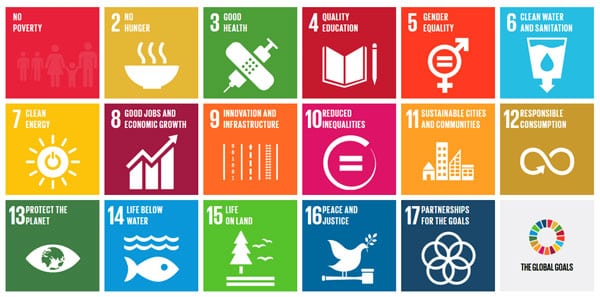
September 18, 2018; Business Insider and Fast Company
The United Nations (UN) established the world’s humanitarian to-do list in 2000, called the Millennium Development Goals. They updated and broadened the list to 17 targets in 2015, calling them the Sustainable Development Goals. About 95 percent of the money spent to address these targets comes from governments, not US philanthropy. As NPQ covered last month, a report from the Council on Foundations and the Foundation Center noted that from in the five-year period from 2011 through 2015, US foundations gave $35.4 billion, compared to $778.6 billion in government aid. That said, over half ($17.9 billion) of that $35.4 billion comes from the Bill & Melinda Gates Foundation. So, it is important to understand its views and strategy.
One trend that is clear is that, overall, conditions are getting better, a result both of direct aid and philanthropy—as well internal economic development in many countries that are recovering, albeit too slowly, from the multi-generational trauma of colonialism:
Three decades ago, more than a third of the world—1.9 billion people—lived below the extreme poverty line of $1.90 a day. By 2017, that number had shrunk to nine percent. By one estimate, someone escapes from extreme poverty roughly every second.
The Gates Foundation just released its Goalkeepers Report. This report informs those attending the second annual Goalkeepers meeting on September 25–26, 2018, coinciding with the 73rd Session of the UN General Assembly.
In addition to being data-driven optimists, the Gates Foundation has shown an admirable willingness to admit mistakes and shortcomings. With assistance from the University of Washington’s Institute for Health Metrics and Evaluation, encouraging data points are matched with equally weighted alarms in the 2018 Goalkeepers report.
Three-quarters of the billion people who lifted themselves out of poverty since 2000 live in China and India. By 2050, 86 percent of the world’s extreme poor will be living in sub-Saharan Africa, with a high concentration—about 40 percent of the world’s extreme poor—in the Democratic Republic of the Congo and Nigeria.
Sign up for our free newsletters
Subscribe to NPQ's newsletters to have our top stories delivered directly to your inbox.
By signing up, you agree to our privacy policy and terms of use, and to receive messages from NPQ and our partners.
A concern expressed by the Gates Foundation is that a combination of continued rapid population growth and limited economic gains could lead extreme poverty numbers to climb in that region. Africa’s population is currently 1.1 billion and, if current trends continue, could double by 2050. The Gates Foundation has invested more than $15 billion in Africa to date.
According to the Gates Foundation assessment, extreme poverty is expected to continue to decline in sub-Saharan Africa—it has fallen from 59 percent of the region’s population to 38 percent since 1990. But even though the foundation projects a continued decline of that rate to 22 percent by 2050, with a population that doubles, that would mean the number of sub-Saharan Africans living in extreme poverty would rise.
In the report’s preface, “Is Poverty Inevitable?” Bill and Melinda Gates begin with this sobering assessment.
To put it bluntly, decades of stunning progress in the fight against poverty and disease may be on the verge of stalling. This is because the poorest parts of the world are growing faster than everywhere else; more babies are being born in the places where it’s hardest to lead a healthy and productive life. If current trends continue, the number of poor people in the world will stop falling—and could even start to rise.
The Goalkeepers Report asserts that Africa needs to be the world’s most important priority.
What happens to the large number of young people there will be the single biggest determinant of whether the world makes progress toward the Sustainable Development Goals—that is, whether life on this planet keeps getting better.
The UN, in its Sustainable Development Goals, after exceeding the target of the previous Millennium Development Goals of reducing poverty by half, has set the goal of eliminating extreme poverty entirely by 2030. The Gates Foundation expresses skepticism at being able to do so, but it does contend that shrinking extreme poverty from its current level of nine percent of the world’s population to below six percent by 2030, and below four percent by 2050, is achievable. In its 53-page report, the foundation outlines some steps to get there, including investment in health, education, women-controlled contraception, and sustainable agriculture.—Jim Schaffer and Steve Dubb













